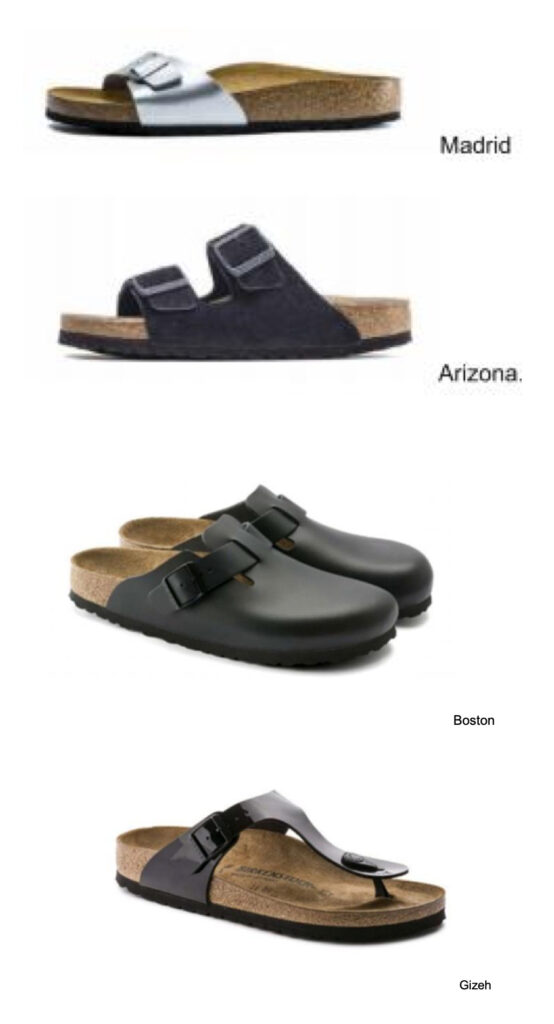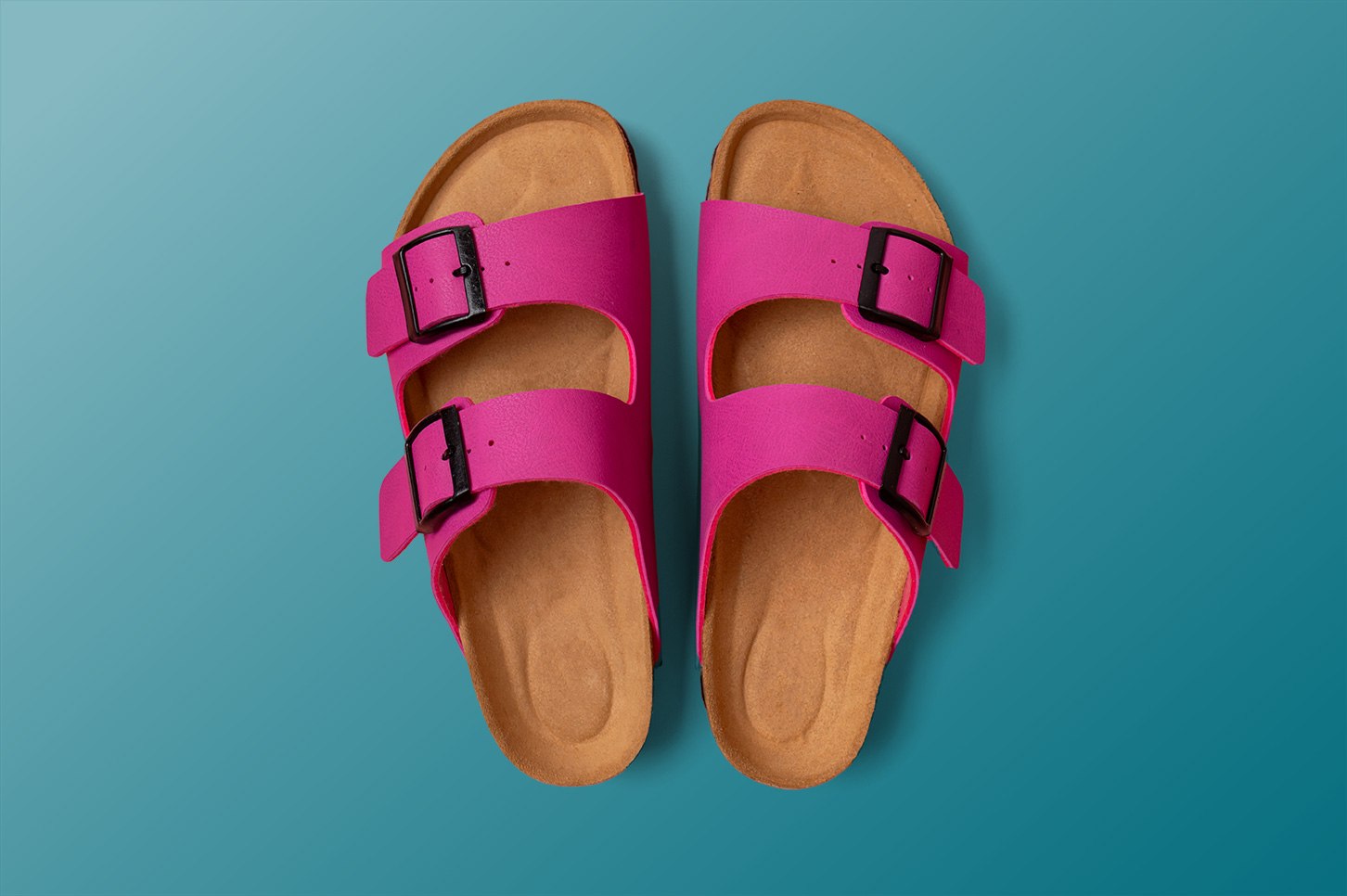Precious Sandal ≠ Copyright Protection?
The decisions of the German Federal Court of Justice (BGH) on several Birkenstock shoe models have caused quite a stir in the media. At the heart of the decisions was the question of whether some of Birkenstock’s iconic models are subject to the long protection period of the German Copyright Act (UrhG) as copyrighted works. The judges answered in the negative, citing the functionality of the footbed and other elements of the Birkenstock sandals. However, the decision of the BGH judges should not be misunderstood, as rights holders have a whole potpourri of options to take action against imitators of original products.
1. Background to the legal dispute
Birkenstock had claimed injunctive relief against imitators of its Madrid, Arizona, Boston and Gizeh shoe models:

In the proceedings, the shoe manufacturer relied exclusively on the German Copyright Act (UrhG). If a product is protected by copyright, the protection lasts for the entire lifetime of the author as well as 70 years after the death of the creator (70 years p.m.a.).
The Regional Court of Cologne, which had jurisdiction in the first instance, had affirmed claims based on copyright law and ruled in favour of Birkenstock in all three proceedings. The Cologne Higher Regional Court overturned the judgements. It considered the design of the shoe models to be predominantly functional-technical and therefore not eligible for copyright protection. The Federal Court of Justice now agreed with this evaluation in its judgements of 20 February 2025. The judges stated for the three appeal proceedings that the Birkenstock models are not copyright-protected works of applied art (judgments of 20 February 2025 – Ref. I ZR 16/24, I ZR 17/24 and I ZR 18/24).
2. Level of originality & creative leeway
In its judgements, the BGH emphasised that for works of applied art, a level of originality that is not too low is required in order to affirm copyright protection (Section 2 (1) No. 4, (2) UrhG). There must be a personal intellectual creation with recognisable individuality. Copyright protection therefore requires that a certain creative leeway exists and has been utilised in an artistic manner.
Such free and creative work is excluded if technical requirements or other constraints somehow predefine the design. A rather technical creation using formal design elements cannot justify copyright protection. The main reason for the BGH judges’ negative judgement was that the design of the Birkenstock sandals was determined by technical, ergonomic and orthopaedic constraints. This applies – according to the judges – for example, to the shape of the footbed, the straps and the buckle design of the shoe models. The creative scope for the authors was therefore restricted. Birkenstock, on the other hand, could not prevail with its argument that the unusual design of the buckles, sole coating and also the strap design on the top of the shoe constituted an independent artistic expression.
3. What remains of the BGH judgement ‘Geburtstagszug’?
Although the assessment of the level of creativity in copyright law has always depended on the circumstances of the individual case, the BGH judgement was somehow surprising in its scope. In 2013, the Federal Court of Justice changed its case law on works of applied art and lowered the previously applicable higher threshold for the required level of creativity in the ‘Geburtstagszug’ judgement (BGH, judgement of 13 November 2013 – case no. I ZR 143/12).
Nevertheless, the judges in the present decisions assumed that a high standard must be applied for the affirmation of copyright protection. It is obvious that purely handcrafted designs cannot be sufficient if no independent artistic individuality that goes beyond the function is recognisable. Nevertheless, in view of the upper shoe shape (buckles/straps/shoe cut) and taking into account the judgements handed down by the BGH on other design classics, it is questionable whether the Birkenstock design focuses predominantly on function or adapts known design forms.
4. Consequences for rights holders
The judgements show that relying solely on copyright protection for works of applied art is always associated with a risk if there is no reliable case law on the existence of copyright protection for the product. Only if a design is highly individualised artistically or a reference to functional reasons for the design can be ruled out is it worth considering invoking copyright protection. Otherwise, Registered Trademarks, Design Rights or Unfair Competition Law (UWG) are generally the more reliable basis for asserting claims against imitators.

